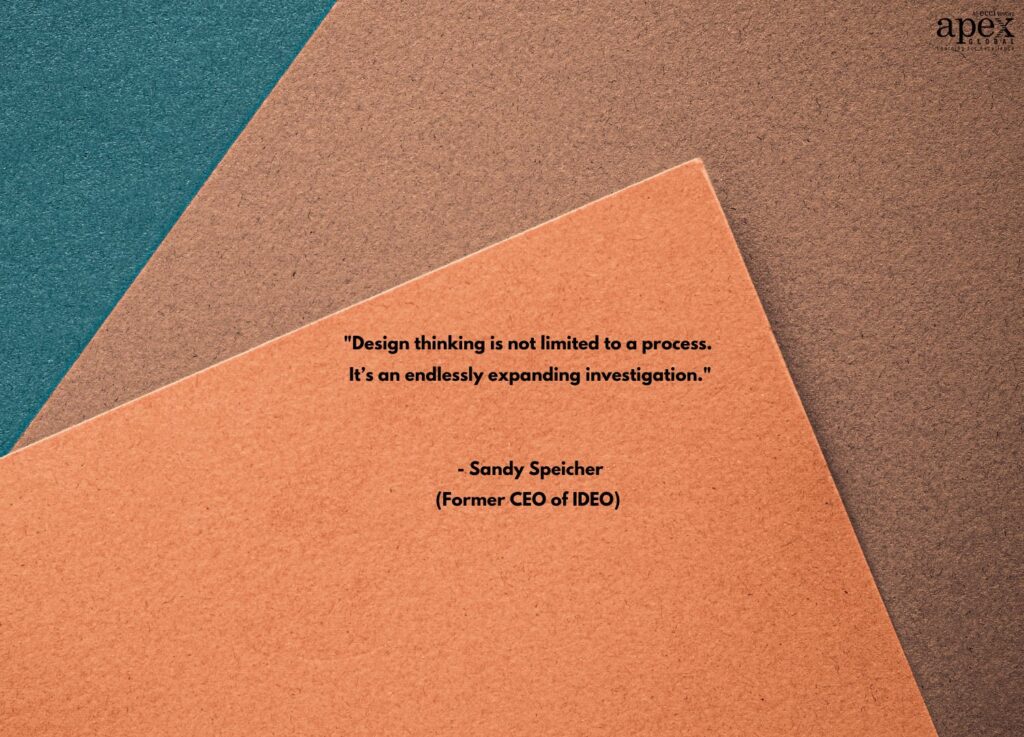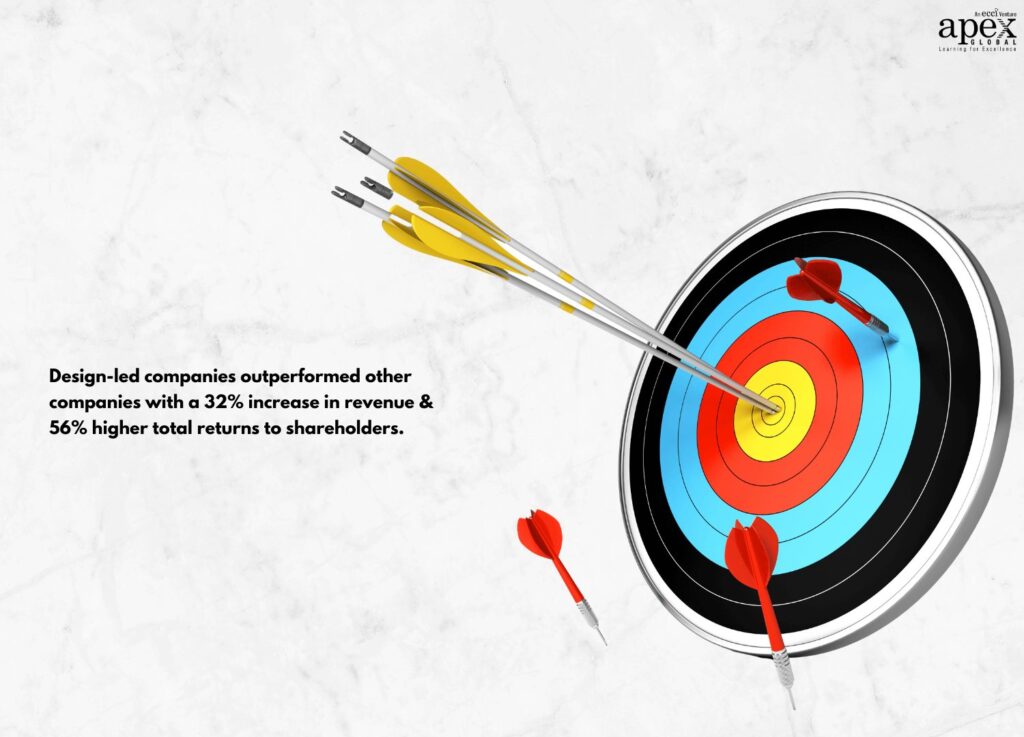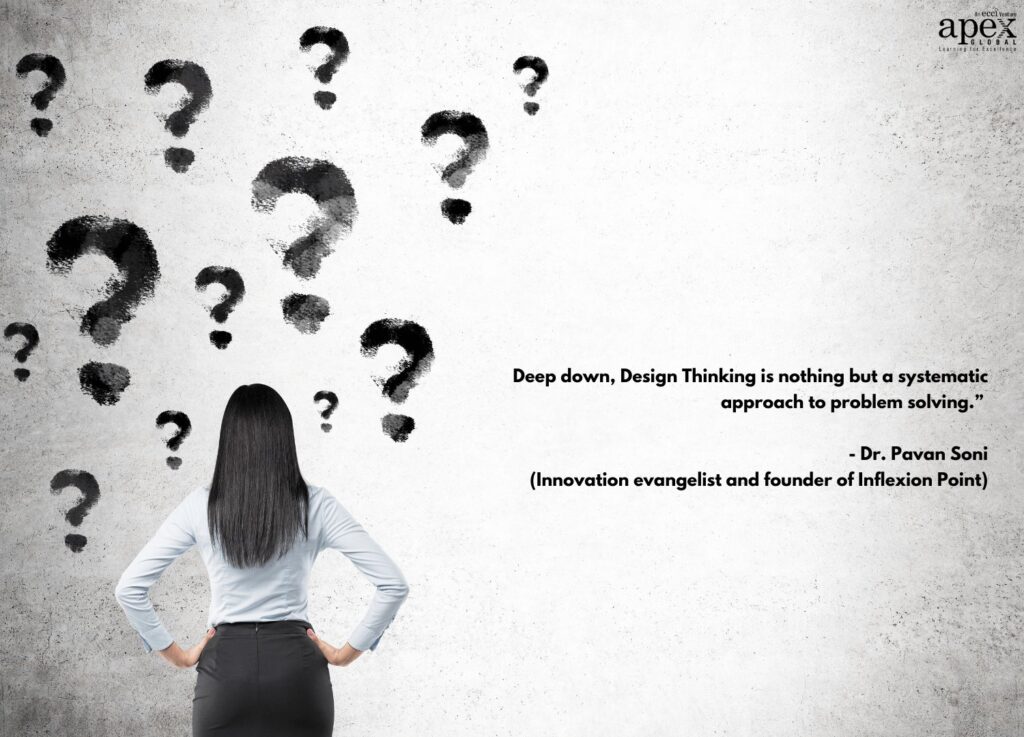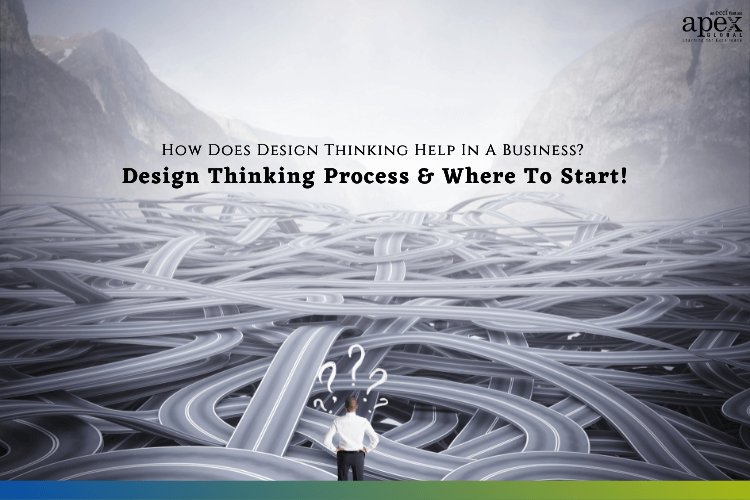Design thinking has been emerging as a powerful tool that can shape the success of businesses around the world, regardless of their size or industry. In this blog post, we’re going to take a look at what design thinking is, discuss the design thinking process, explore the benefits of design thinking in a business, and also talk about how to start your design thinking journey.
In the past decades, design thinking may have been overlooked or underestimated by organizations. However, in today’s business world, design thinking has emerged as an important driving force that cannot be ignored.
Many organizations, including Fortune 500 companies like Apple, Disney, Microsoft, and IBM, have harnessed the transformative power of design thinking to gain a competitive edge and drive remarkable growth.
But how exactly does design thinking help in a business? Read on and find out!
What you'll find in this article
What is design thinking?
Before we get to how design thinking helps in a business, let’s first take a quick look at the meaning of design thinking.
Design thinking is both a mindset and a process that offers a creative approach to problem-solving by actively involving end users.
It shifts the focus from a business-centric solution to a customer-centric solution. That is, instead of inventing a product based on some assumptions and crossing our fingers that it will work for the target audience, design thinking encourages businesses to take a different approach. It prompts them to first explore cultural phenomena, observe behavioral patterns, gain insights into customer needs, and then design a product around that.
By using this approach, businesses can create better products and services that directly address the customers’ needs & pain points, which results in improved sales and a stronger competitive advantage in the market
What is the design thinking process?
So, now we’ll explore what the design thinking process is. It is a non-linear, iterative, user-focused methodology that you can use to solve problems effectively. It has five stages (as defined by the Hasso Plattner Institute of Design at Stanford). They are:
1. Empathize
2. Define
3. Ideate
4. Prototype
5. Test
As we said, design thinking is a non-linear process, so these steps are not always sequential. They are often implemented in parallel, out of order, and some steps are even repeated in an iterative fashion. So, just take this model as a framework and then tweak it as needed.

Let’s take a brief look at each of the five stages before we get to the good stuff.
Stage #1: Empathize
The first step involves setting aside your assumptions and gaining real insight into user needs by putting yourself in their shoes. During this phase, you have to engage with the target audience directly and observe their behaviors, workflows, and environment. By watching how they work and experiencing their daily activities, you can gain valuable insights into their challenges, pain points, and needs.
Stage #2: Define
In the define phase, you have to analyze the data and observations collected in the empathize phase and establish an actionable problem statement. Start by looking for patterns and underlying themes. By organizing the information and drawing connections, you’ll be able to define a problem statement that captures the essence of the challenge you aim to solve.
Stage #3: Ideate
The ideate stage is where you have to brainstorm and come up with a wide range of ideas to address the defined problem statement. You and your team have total freedom in this phase, so think of as many ideas and solutions as possible, no matter how crazy they might sound. Once you are done, shortlist the ideas and choose the most feasible ones that you can pursue.
Stage #4: Prototype
In the prototype phase of design thinking, you have to bring your ideas to life through tangible representations. Here, you have to create physical or digital prototypes of your ideas that can be tested and refined. By creating prototypes, you can gather valuable feedback from users and stakeholders, allowing you to learn, iterate, and improve the solutions.
Stage #5: Test
In this final stage, you validate and refine your prototypes through real-world feedback and user testing. This crucial stage allows you to gather insights, identify strengths & weaknesses, and make necessary improvements to your solutions. By involving the users in the testing process, you can ensure that the final product or service aligns with their needs, preferences, and expectations. Explore the five stages of the design thinking process in more detail here.
How does design thinking help in a business?
Alright, finally, we are here. The burning question on your mind: How does design thinking help in a business? Well, design thinking brings a number of benefits to companies no matter the size or the industry. Here is the list of some of the most important benefits:
A. Cost savings
Cost savings is one of the greatest benefits of design thinking in business. It enables companies to hone in on specific solutions that address customers’ immediate needs. Through the insights gained from the different stages of the design thinking process, companies can allocate resources more effectively, preventing wasteful investment of time, money, labor, and materials on solutions that may not succeed.
Additionally, design thinking provides the ability to test ideas without committing substantial resources to full-scale product development, allowing companies to assess the viability of a new product or service before investing significant time and money. This iterative approach helps businesses save valuable resources, optimize their decision-making, and mitigate the risks associated with developing products or services that may not resonate with customers.
B. Increased revenue

Another amazing benefit of design thinking is that it helps in increasing the revenue of a company. It encourages businesses to deeply understand their customers and their pain points, enabling them to develop products that actually meet their needs. By delivering solutions that address customers’ specific challenges, businesses can enhance customer satisfaction and loyalty, leading to repeat purchases and increased revenue.
Design thinking emphasizes the importance of innovation and creativity. By fostering a culture of experimentation, risk-taking, and out-of-the-box thinking, businesses can develop groundbreaking products or services that differentiate them from competitors. These innovative products can attract new customers, open up new market opportunities, and drive revenue growth.
For example, in 2007, Intuit implemented a new policy allowing employees to allocate 10% of their working hours to side projects. During this time, some employees began questioning the purchasing policy for TurboTax, specifically regarding the company’s emphasis on selling packages of five software seats, despite the majority of users typically only needing one seat.
As a result of this internal examination and subsequent adjustment in focus, Intuit experienced a significant increase in sales for TurboTax. In the first year alone, the change led to a remarkable $10 million boost in sales. This shows how design thinking can lead to valuable insights and impactful changes that positively influence a company’s financial performance.
Design thinking also encourages businesses to view problems as opportunities for growth. By reframing challenges as possibilities to create innovative solutions, businesses can unlock new revenue streams. This mindset shift allows organizations to identify untapped market needs and develop unique value propositions that attract customers and generate revenue.
C. Problem-solving
Design thinking allows businesses to identify problems accurately and gain critical insights & data necessary for developing effective solutions that generate revenue.
Often, customers struggle to articulate their needs or might not even be aware of the problem they face. Through keen observation of real customer behavior, companies can identify and define these ambiguous challenges easily.
It helps businesses tackle complex problems by breaking them down into tangible ones that can be thoroughly analyzed and addressed. After identifying the problem, design thinking also unlocks people’s ability to think outside the box and helps them come up with creative solutions.
Design thinking can be used to solve any kind of challenge. Whether you’re trying to discover a new product that will take over the market, streamline the operations of a governmental agency, or reduce employee turnover, design thinking can help.
For example, design thinking has been used in Kaiser Permanente to revamp the system of shift changes among nursing staff. It has helped the Singapore government to streamline the process of securing a work pass in the nation-state. It has also been used to solve business problems at companies like SAP, Toyota, Intuit, and IBM.

D. Creating better products
Design thinking allows you to understand your customer’s behavior deeply. It allows you to understand their pain points, daily habits, preferences, and motivation, enabling you to empathize with your users. As a result, you can create products that actually solve their problems and are both desirable and usable.
Design thinking also emphasizes ideation and brainstorming, encouraging teams to generate a wide range of creative solutions. This leads to the development of unique and differentiated products that stand out in the market.
Moreover, design thinking emphasizes prototyping and testing. By creating tangible representations of ideas and gathering feedback from users, businesses can iterate and refine their product designs. This iterative process helps identify potential flaws or areas for improvement early on, ensuring that the final product meets user expectations. Learn more about prototyping in design thinking here.
E. Improved customer retention and loyalty
Another important business benefit of implementing design thinking is its ability to enhance customer retention and foster loyalty. And how does it do that?
We’ve learned that design thinking emphasizes empathy and a deep understanding of customer needs. By conducting thorough research and actively listening to customers, companies can uncover insights into their pain points, preferences, and culture. This understanding enables businesses to create products, services, and experiences that address those needs, satisfying and delighting their users. Learn more about empathy in design thinking here.
Second, design thinking encourages a customer-centric approach throughout the entire customer journey. By considering every touchpoint, from initial product inquiry to post-purchase support, businesses can ensure a seamless and delightful experience at every step. This way, they can differentiate themselves in the market and build long-term relationships with their customers.
F. Team collaboration
Design thinking is not just for designers or the design industry. It fosters a collaborative mindset and encourages cross-team collaborations, irrespective of one’s team or industry. This means people with different perspectives can come together and work toward a shared objective and potentially develop a range of innovative ideas for solving problems and building better products/services.
G. Innovation & competitive advantage
Too often, businesses fall into the trap of internally creating ideas that are just incremental improvements to existing products. While incremental improvements are nice, solely relying on them can leave a business vulnerable to disruption from external forces.
Design thinking helps companies break free from this trap by encouraging innovation and outside-the-box thinking. By challenging conventional ideas and assumptions, businesses can push beyond incremental changes and seek transformative solutions that address customer needs in innovative ways.
By adopting design thinking, businesses also become better equipped to identify disruptive opportunities and proactively address evolving customer needs. This way, they can stay ahead of the competition and eventually reach a higher market position.
Where to start
Want to transform your organization through the power of design thinking but don’t know where to start? There are various resources available out there, like books, articles, and videos, that can help you learn more about design thinking and kick-start your journey. However, one of the most effective ways to truly embrace and implement design thinking is through a dedicated workshop like APEX Global’s “Design Thinking Practitioner” course.
Our 2-day immersive training equips you with all the essential knowledge and skills to apply design thinking principles efficiently. Our experienced instructors will help you embrace all the phases of design thinking with 10+ powerful case studies. You’ll be able to gain hands-on experience in using design thinking tools and techniques, allowing you to tackle real-world business challenges with confidence. Enroll in our course today to get started!
Conclusion
As we’ve seen in this blog, design thinking brings many practical benefits that can boost the bottom line. Hence, it’s no surprise that more and more companies are now embracing this process and mindset.
So, whether you’re a small startup or a multinational corporation, integrating design thinking into your business strategy can unlock a world of possibilities. Embrace the principles of design thinking, leverage the resources, and consider investing in a comprehensive course to transform your business and unleash its full potential.
Have any questions or thoughts about design thinking? Reach out and share them with us. We’d love to hear what’s inspiring you lately!


